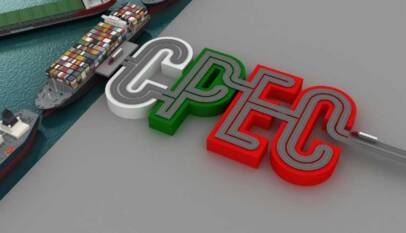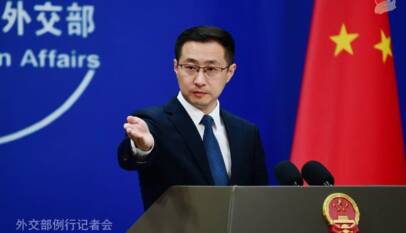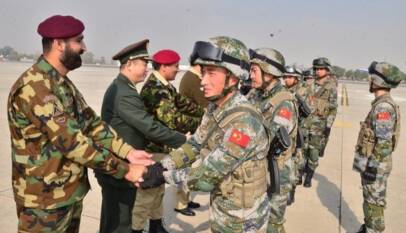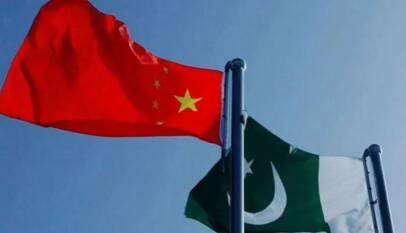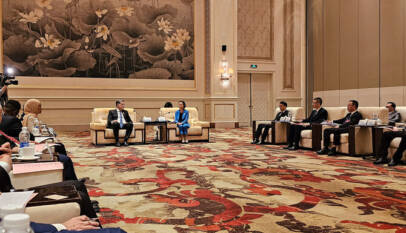Launch of SEZs shows second phase of CPEC has commenced: Naghmana Hashmi
Pakistan’s Ambassador to Beijing, Naghmana Alamgir Hashmi quoted an interview that the second phase of CPEC has begun which is illustrated through the establishment of SEZs in different parts of Pakistan. Talking about the renewed China-Pakistan Free Trade Agreement (CPFTA-II), envoy stated that duties exemption on products would ultimately lower the prices. She emphasized that Pakistan being a major exporter of agricultural goods should be determined to boost agricultural exports to China. She suggested that Pakistan should focus on making agricultural products cheaper with the help of Chinese joint ventures, usage of modern technology and collaborating with farmers and exporters to set fair prices to fill in the Chinese fruits and vegetable market. Ambassador also highlighted the need for cold chain network for the expansion of exported agricultural goods via roads such as mangoes and fisheries. Naghmana Hashmi said Pakistan, with plenty of mineral reserves available in the country’s north and south, can establish its sound gemstone industry only with the help of Chinese expertise and advanced technology.
BEIJING, Jan 4 (APP):The second phase of the China Pakistan Economic Corridor (CPEC), a flagship project of Belt and Road Initiative has started with the establishment of special economic zones in various parts of the country, Pakistan Ambassador to China, Naghmana Alamgir Hashmi said on Saturday.
“The second phase of CPEC has now started, which is actually the establishment of special economic zones in various parts of the country,”she said in an interview with China Economic Net.
Ambassador Hashmi remarked that with the establishment of these special economic zones and the signing of agreements between the Chinese and Pakistani agricultural sectors and with increased cooperation, agriculture was a field with great potential for investment and re-export.
She said that with the China-Pakistan Free Trade Agreement becoming operational, the price would in any way go down, because the import duties would not apply.
“So with the establishment of these special economic zones and with the increasing number of agreements and cooperation in the agricultural sector, which is a priority both with President Xi and with Prime Minister Imran Khan, I think this is one area where there is a huge potential of both investments, growth and then re-export of those value added products to China,” she added.
Talking about the Pakistani products which have the most export potential to China, she said in order to let more Chinese consumers know about Pakistani mangoes, a Mango Festival was held in the Pakistan Embassy Beijing.
“This is Pakistan’s third Mango Festival held in Beijing. Mango is one of Pakistan’s leading export products. One day, we hope to see Pakistani mangoes sold in supermarkets and markets across China,” she added.
To reduce the price of Pakistani Mango in China, Ambassador Hashmi said that the products of the country of origin were generally cheaper, but a series of tariffs were added to the products when exporting, and mangoes also needed to be treated with hot water, steam sterilization or other technologies. These technologies were not readily available in Pakistan, increasing product prices.
“The first thing China can do to reduce the price of Pakistani agricultural products in China is through joint ventures, through the introduction of technology, and working with farmers and exporters to set reasonable prices in order to meet China’s requirements for imported fruits and vegetables,” she added.
Secondly, Hashmi believed that with the CPEC process and the establishment of the cold chain system, many products could be transported by road without air transport.
Due to its short shelf life, mango was currently unable to be transported to China by land, and fisheries and other agricultural products also needed to be transported by cold chain roads, so she believed this was an area where many Chinese investors do business in Pakistan.
This is mutually beneficial for importers and exporters, and it was also a way to introduce high-quality Pakistani agricultural products to China at reasonable prices.
On zero-tariff treatment given to 313 types of Pakistani products after implementation of FTA Phase-II, Ambassador Hashmi said that some traditional export varieties of Pakistan were very popular in China. “For example, Pakistan exports a lot of rice to China, but Pakistan’s most famous Basmati rice is not very popular in China.”
She said that there was another type of rice in Pakistan that was very close to Chinese rice, called IRRI-6, a small grain of glutinous rice. This type of rice could be exported to China.
On Pakistan’s sugar export to China, Ambassador Hashmi said China was importing more and more Pakistani sugar, and it would be the same next year. For Pakistani growers, exporters and sugar makers, sugar was a new product launched in the Chinese market. Once the attempt was successful, Pakistan would export more sugar to China in the next two years.
Ambassador Hashmi said Pakistan produced a lot of cotton. China had a huge textile industry, so Pakistan’s yarn was exported to China.
“We have a lot of gems. The Chinese like Onyx. Baluchistan Province in northern Pakistan is the only one producing Onyx in the world. There are many gold and copper is transported from our mine to China. Therefore, minerals and gems in Pakistan have great market potential.”
Ambassador Hashmi said the gem field is another area where Pakistan was looking for a Chinese joint venture.
“In northern Pakistan, there are beautiful gems everywhere. But we don’t have advanced technology to polish them. And the Chinese know how to sculpt to make beautiful jewelry products. Chinese technicians, stone importers, manufacturers can work with Pakistan Enterprises establish joint ventures.”
CPEC’s Success Story: $25 Billion Invested Across 38 Completed Projects
ISLAMABAD: A total of 38 projects worth over $25 billion have been completed and 23 develo…




